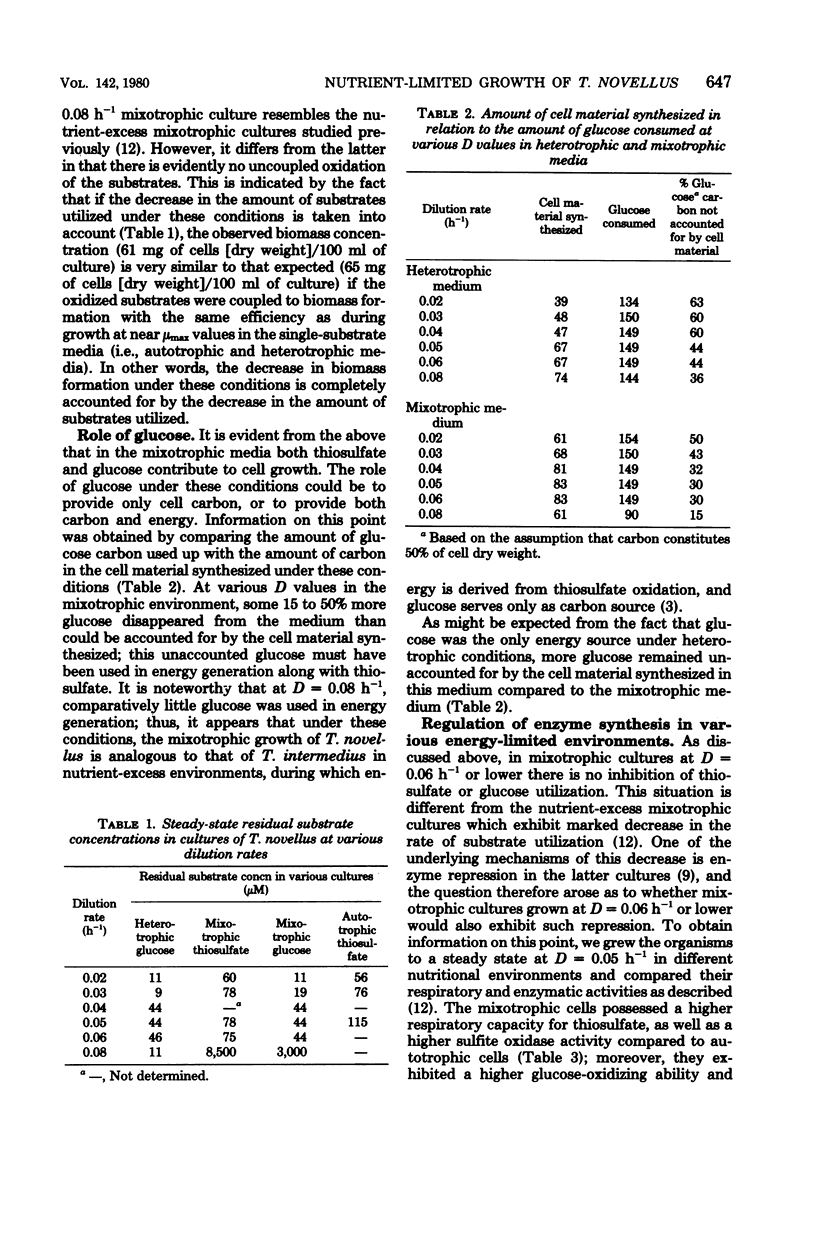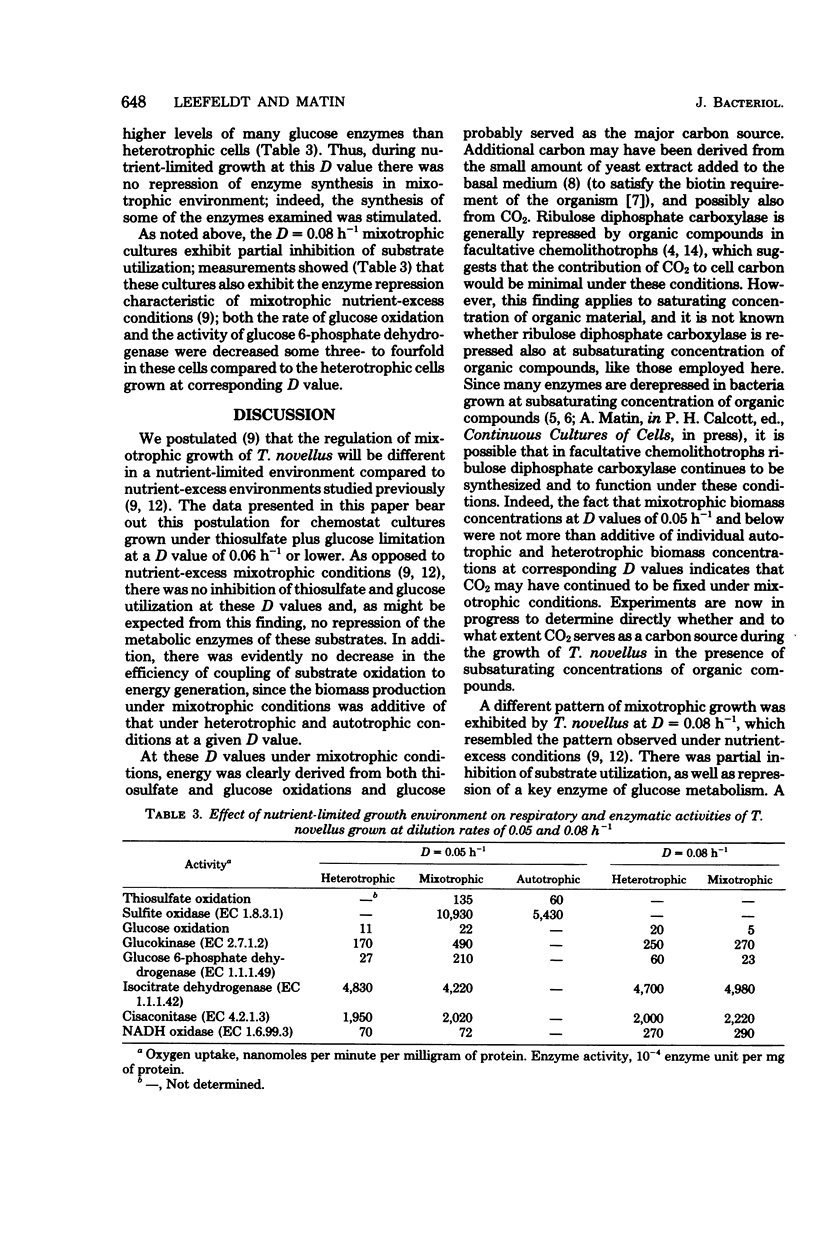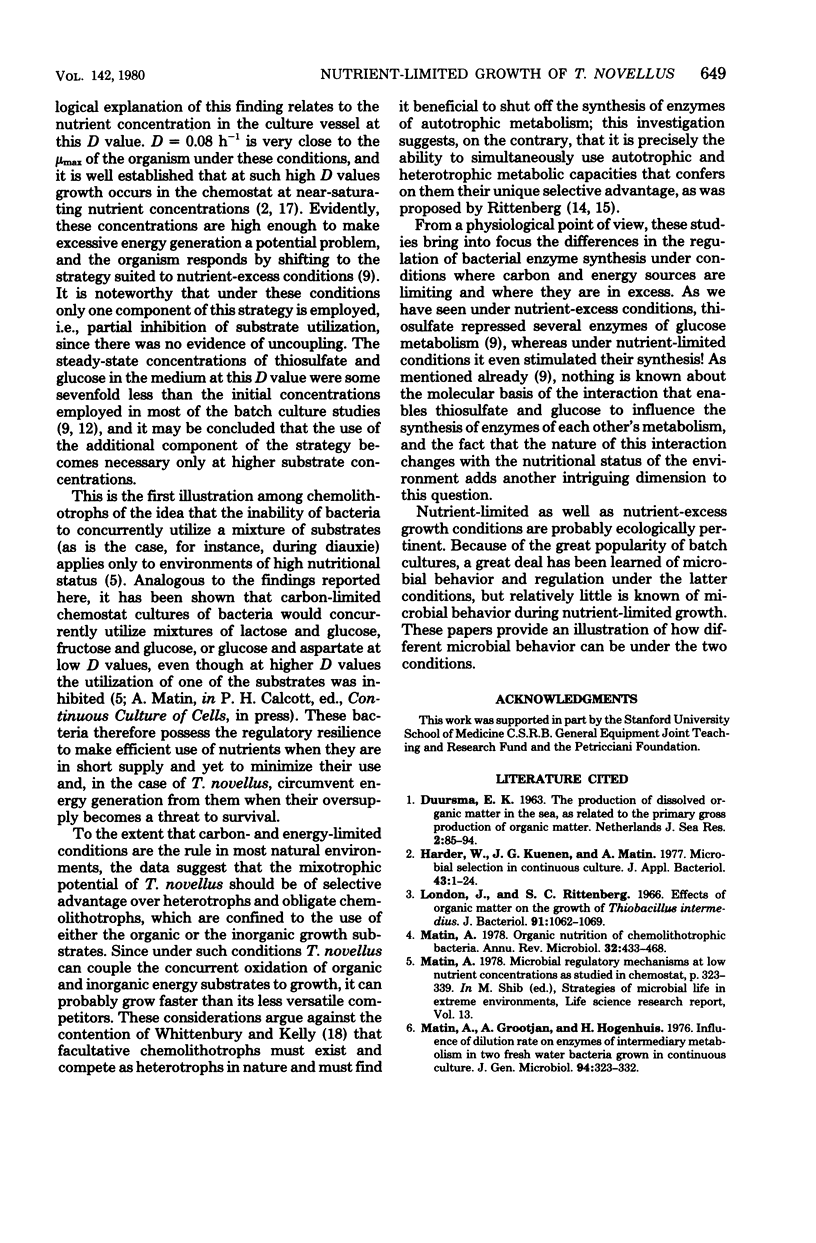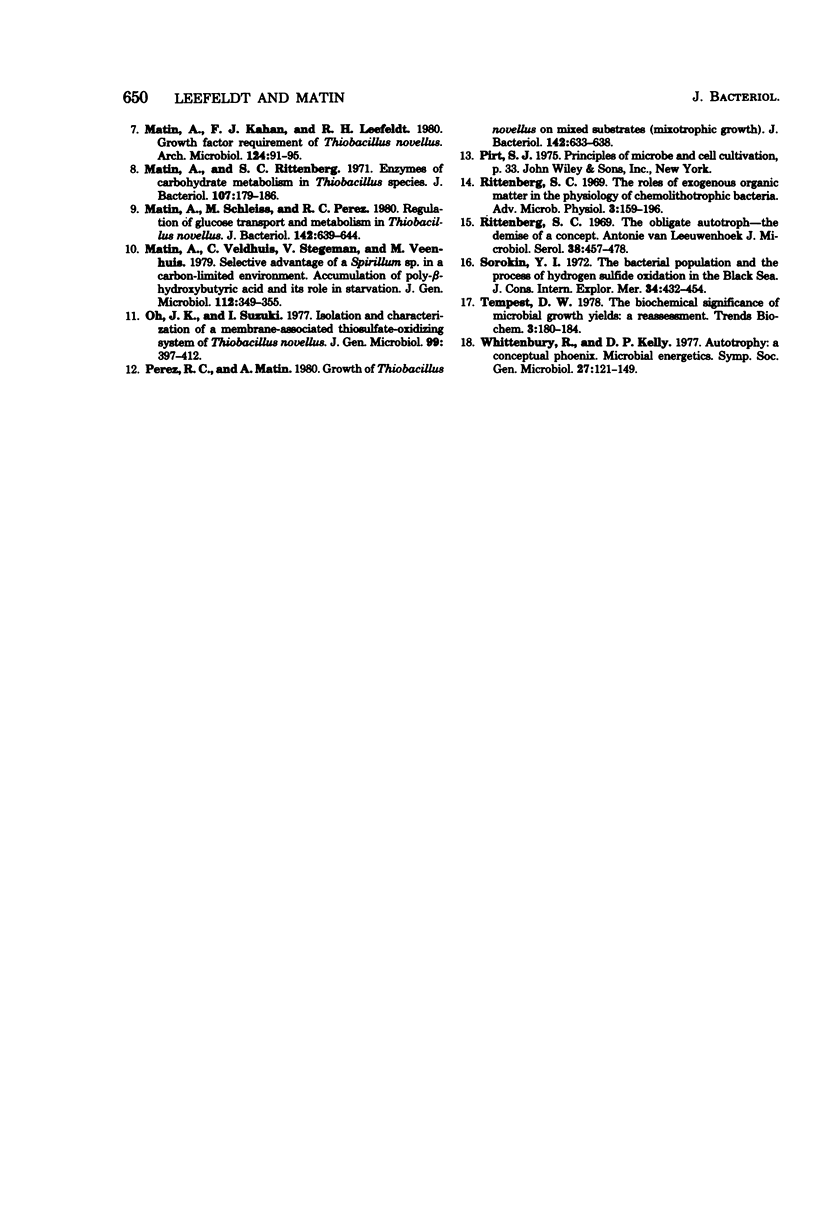Abstract
Thiobacillus novellus was cultivated in a chemostate under the individual limitations of thiosulfate, glucose, and thiosulfate plus glucose. At dilution rate (D) of 0.05 h-1 or lower, the steady-state biomass concentration in mixotrophic medium was additive of the heterotrophic and autotrophic biomass at corresponding D values. The ambient concentrations of thiosulfate, glucose, or both in the various cultures were low and were very similar in mixotrophic, heterotrophic, and autotrophic environments at a given D value. At D = 0.05 h-1, mixotrophic cells possessed higher activities of sulfite oxidase and thiosulfate oxidation compared to autotrophic cells, as well as higher activities of glucose enzymes and glucose oxidation than heterotrophic cells. Thus, in contrast to nutrient-excess conditions, in nutrient-limited mixotrophic environments at these D values, T. novellus did not exhibit characteristics of uncoupled substrate oxidation, inhibition of substrate utilization, and repression of enzymes of energy metabolism. It is concluded that T. novellus responds to mixotrophic growth conditions differently in environments of different nutritional status, and the ecological and physiological significance of this finding is discussed.
Full text
PDF





Selected References
These references are in PubMed. This may not be the complete list of references from this article.
- Harder W., Kuenen J. G. A review. Microbial selection in continuous culture. J Appl Bacteriol. 1977 Aug;43(1):1–24. doi: 10.1111/j.1365-2672.1977.tb00717.x. [DOI] [PubMed] [Google Scholar]
- London J., Rittenberg S. C. Effects of organic matter on the growth of Thiobacillus intermedius. J Bacteriol. 1966 Mar;91(3):1062–1069. doi: 10.1128/jb.91.3.1062-1069.1966. [DOI] [PMC free article] [PubMed] [Google Scholar]
- Matin A., Grootjans A., Hogenhuis H. Influence of dilution rate on enzymes of intermediary metabolism in two freshwater bacteria grown in continuous culture. J Gen Microbiol. 1976 Jun;94(2):323–332. doi: 10.1099/00221287-94-2-323. [DOI] [PubMed] [Google Scholar]
- Matin A. Organic nutrition of chemolithotrophic bacteria. Annu Rev Microbiol. 1978;32:433–468. doi: 10.1146/annurev.mi.32.100178.002245. [DOI] [PubMed] [Google Scholar]
- Matin A., Rittenberg S. C. Enzymes of carbohydrate metabolism in Thiobacillus species. J Bacteriol. 1971 Jul;107(1):179–186. doi: 10.1128/jb.107.1.179-186.1971. [DOI] [PMC free article] [PubMed] [Google Scholar]
- Matin A., Schleiss M., Perez R. C. Regulation of glucose transport and metabolism in Thiobacillus novellus. J Bacteriol. 1980 May;142(2):639–644. doi: 10.1128/jb.142.2.639-644.1980. [DOI] [PMC free article] [PubMed] [Google Scholar]
- Matin A., Veldhuis C., Stegeman V., Veenhuis M. Selective advantage of a Spirillum sp. in a carbon-limited environment. Accumulation of poly-beta-hydroxybutyric acid and its role in starvation. J Gen Microbiol. 1979 Jun;112(2):349–355. doi: 10.1099/00221287-112-2-349. [DOI] [PubMed] [Google Scholar]
- Perez R. C., Matin A. Growth of Thiobacillus novellus on mixed substrates (mixotrophic growth). J Bacteriol. 1980 May;142(2):633–638. doi: 10.1128/jb.142.2.633-638.1980. [DOI] [PMC free article] [PubMed] [Google Scholar]


